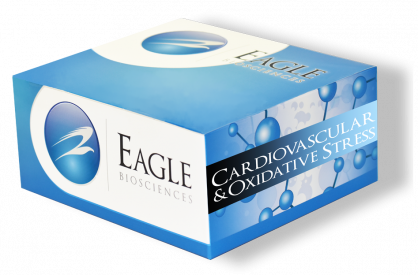Malondialdehyde HPLC Assay Kit
The Malondialdehyde HPLC Assay Kit is For Research Use Only
Size: 100 tests
Incubation Time: 1 hour
Sample Type: Serum, Plasma
Sample Size: 20 µL
Alternative Name: MDA HPLC Assay Kit
Reference Values (Normal):
- EDTA plasma: < 1 µmol/l
Product Developed and Manufactured in Germany
Product Support in the USA
It is suggested that each laboratory establish its own normal ranges
Assay Background
In a healthy body, oxidative and reductive processes are in a balance. Free radicals (reactive oxygen species) are eliminated by antioxidants. In case of a lack of antioxidants free radicals react with cell structures. A reaction of free radicals with unsaturated fatty acids leads to lipid peroxidation products. A reaction of free radicals with poly-unsaturated fatty acids generates malondialdehyde and/or 4-hydroxynonenal. These secondary lipid peroxidation products might react with other molecules in the cell. Modifications of the DNA-based adenine or guanine result in incorrect transcripts. A reaction of free radicals with proteins leads to an alteration or loss of function. The creation of neoantigens is possible. Neoantigens are recognized by the immune system, thus resulting in autoimmune diseases. The participation of lipid peroxidation products have been discussed in several diseases such as atherosclerosis, tumor genesis, rheumatism and reperfusion injury after transplantation.
The Eagle Biosciences Malondialdehyde (MDA) HPLC Assay kit makes it possible to determine the lipid peroxidation product in an easy, fast and precise method. The Malondialdehyde (MDA) HPLC Assay kit includes all reagents ready to use for preparation and separation of the samples with exception of the columns (IC1900rp) and the controls (IC1900ko). Both can be supplied by Eagle Biosciences. Beside the complete test kits it is possible to order all components separately. Please request our single component price list.
Related Products
Malondialdehyde (MDA) HPLC Assay Kit Column
Malondialdehyde (MDA) HPLC Assay Kit Control Set


